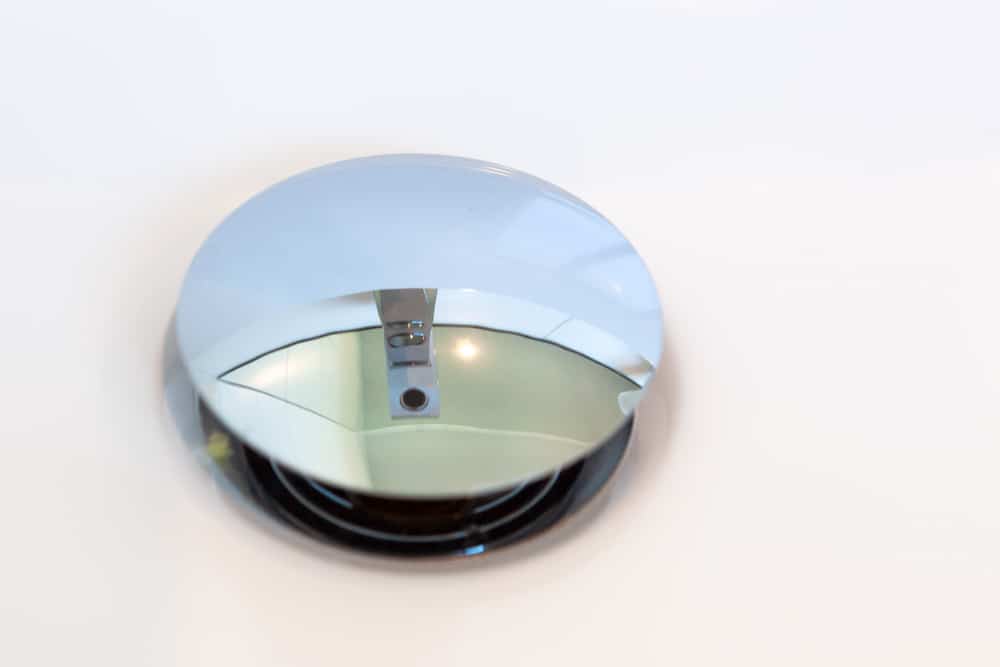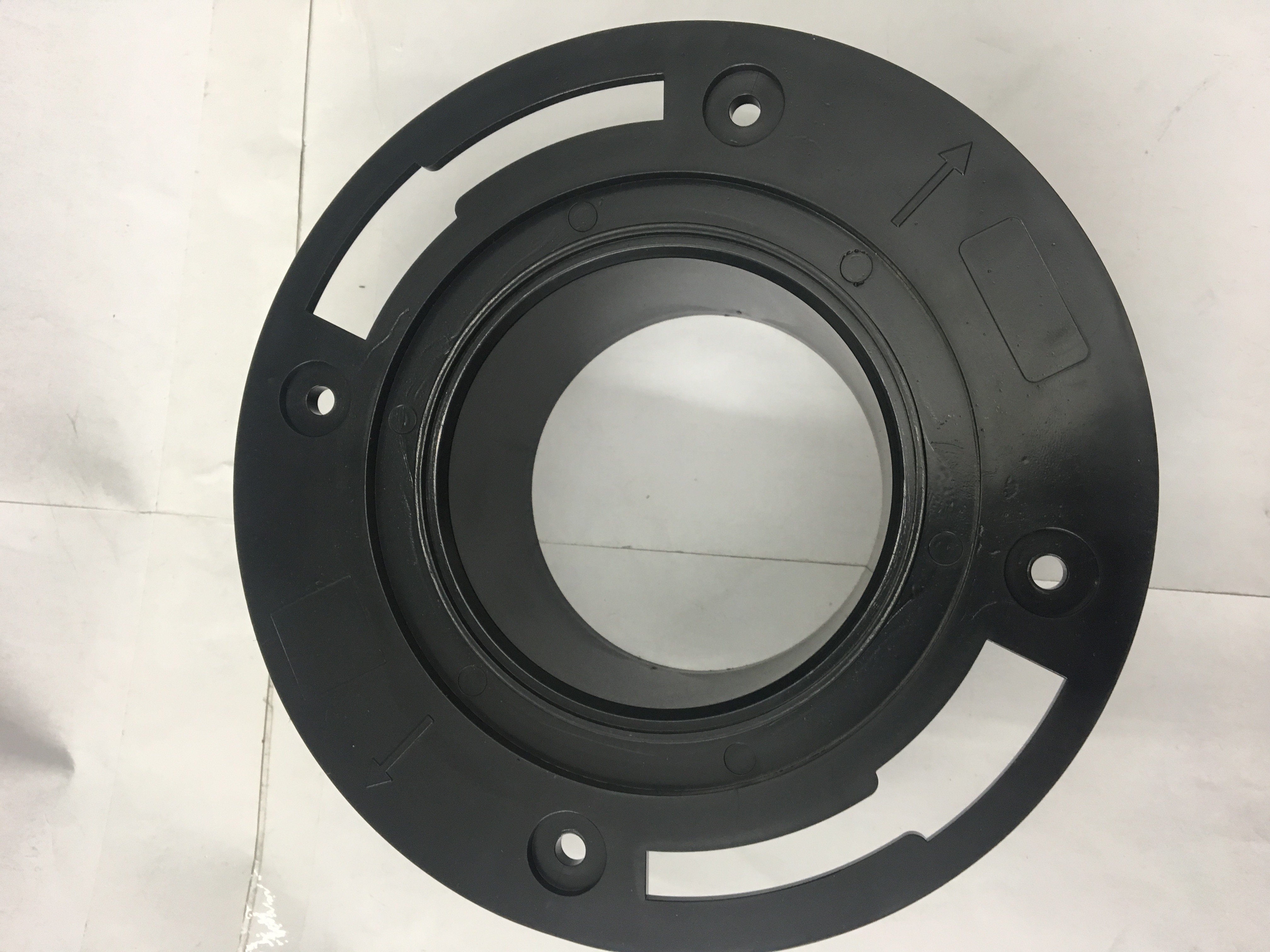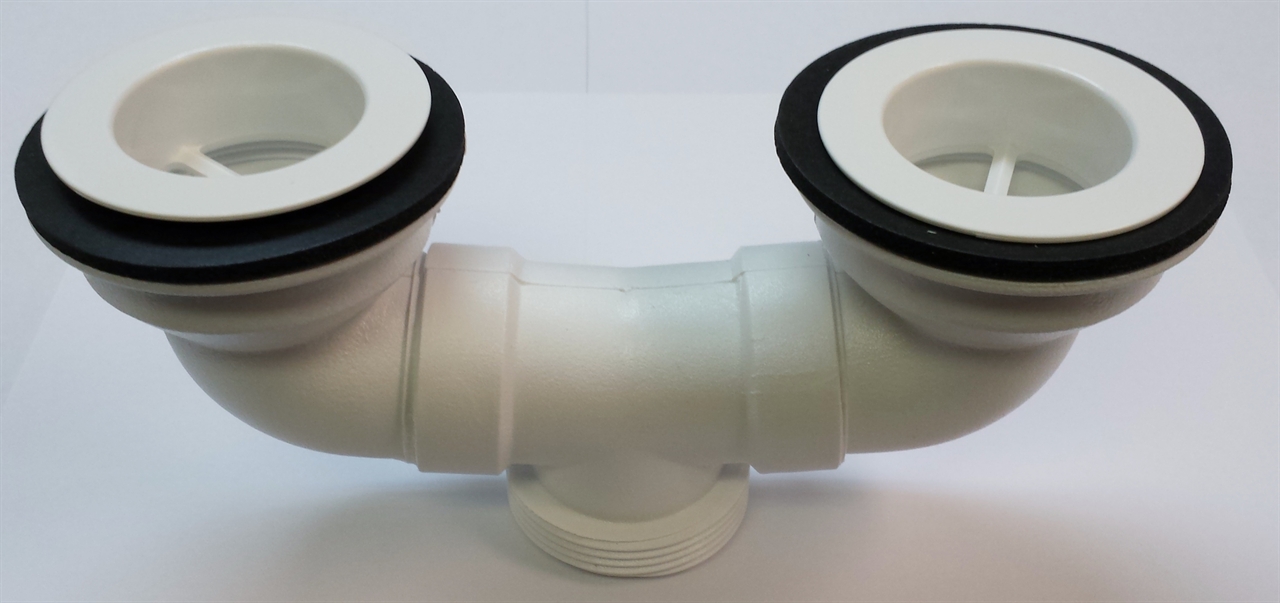The drain stopper is a crucial component of a bathroom sink drain, as it is responsible for stopping water from draining out of the sink. It is typically located in the center of the sink and can be lifted or pulled to allow water to flow through or to stop it from draining. There are various types of drain stoppers, including push-button, lift-and-turn, and pop-up stoppers, each with their own unique mechanism for controlling water flow.Drain stopper
The pop-up drain is a popular type of drain stopper that is commonly found in modern bathroom sinks. It is a small, circular piece that sits at the bottom of the sink and can be raised or lowered using a lever or knob on the faucet. When raised, the pop-up drain allows water to flow out of the sink, and when lowered, it stops the water from draining. This type of drain is convenient as it eliminates the need for a separate drain plug and can easily be opened and closed with just one hand.Pop-up drain
The P-trap is a curved pipe that is located under the sink and is responsible for preventing foul odors from entering the bathroom through the drain. It works by trapping a small amount of water in its curve, which creates a seal between the sewer line and the sink. This prevents any gases from escaping and keeps the bathroom smelling fresh. The P-trap is an essential component of a bathroom sink drain and should be regularly cleaned to maintain its effectiveness.P-trap
The tailpiece is a straight pipe that connects the sink to the P-trap and is responsible for carrying water from the sink down into the P-trap. It is usually made of metal or plastic and is attached to the bottom of the sink using a nut and washer. The tailpiece is an important part of the drain system as it ensures a smooth flow of water from the sink into the P-trap.Tailpiece
The overflow drain is a small opening near the top of the sink that serves as a secondary drain in case the main drain becomes clogged. It is connected to the main drain pipe and allows water to flow out of the sink if the main drain is blocked. The overflow drain is particularly useful for preventing water from overflowing onto the bathroom floor and causing damage.Overflow drain
The drain flange is a flat, circular piece that is attached to the bottom of the sink and serves as the opening for the drain. It is usually made of metal or plastic and is secured to the sink using a nut and washer. The drain flange also provides a surface for the drain stopper to rest on and helps to keep the drain in place.Drain flange
The drain body is the main housing for the drain, and it connects the drain flange to the drain pipe. It is usually made of metal or plastic and is responsible for directing water from the sink into the drain pipe. The drain body also contains the mechanism for controlling the drain stopper, such as a lever or knob.Drain body
The drain assembly refers to the entire system of components that make up the bathroom sink drain. This includes the drain stopper, pop-up drain, P-trap, tailpiece, overflow drain, drain flange, and drain body. All these parts work together to ensure proper drainage and prevent any blockages or leaks.Drain assembly
The drain pipe is the final part of the drain system and is responsible for carrying water from the sink down to the main sewer line. It is usually made of plastic or metal and is connected to the drain body using a nut and washer. The drain pipe should be regularly checked for any clogs or damage to ensure the proper functioning of the bathroom sink drain.Drain pipe
The drain plug is a small, removable piece that is used to stop water from draining out of the sink. It is often used in conjunction with a pop-up drain and is usually made of rubber or plastic. The drain plug can easily be removed to allow water to flow freely or inserted to stop the water from draining. It is an essential component for filling up the sink for washing or shaving and should be kept clean and free of any debris.Drain plug
The Mechanics of a Bathroom Sink Drain

Introduction to Bathroom Sink Drain Mechanics
 When it comes to designing a functional and efficient bathroom, the mechanics of a bathroom sink drain are an important aspect to consider. A properly functioning sink drain not only prevents clogs and backups, but also adds to the overall aesthetic of the bathroom. In this article, we will discuss the main components of a bathroom sink drain and how they work together to create a seamless drainage system.
When it comes to designing a functional and efficient bathroom, the mechanics of a bathroom sink drain are an important aspect to consider. A properly functioning sink drain not only prevents clogs and backups, but also adds to the overall aesthetic of the bathroom. In this article, we will discuss the main components of a bathroom sink drain and how they work together to create a seamless drainage system.
The Main Components of a Bathroom Sink Drain
 Bathroom Sink:
The sink itself is the first component of the drain system. It is where water and other liquids are collected before being drained out through the drain pipe. Sinks come in various sizes, shapes, and materials, but they all have one thing in common – a drain hole.
Drain Pipe:
The drain pipe is the second component of the bathroom sink drain. It is a hollow tube that connects the sink to the main plumbing system of the house. The drain pipe is responsible for carrying all the wastewater from the sink to the sewer or septic tank.
P-Trap:
The P-trap is a curved section of the drain pipe that prevents sewer gases from entering the bathroom. It also helps to trap debris and prevent it from clogging the drain pipe. The P-trap is usually located right below the sink and can be easily accessed for cleaning or maintenance.
Stopper:
The stopper is the final component of the bathroom sink drain. It is a plug that can be manipulated to either allow or prevent water from draining out of the sink. There are different types of stoppers, including pop-up, push-pull, and lift-and-turn, each with its own mechanism for controlling the flow of water.
Bathroom Sink:
The sink itself is the first component of the drain system. It is where water and other liquids are collected before being drained out through the drain pipe. Sinks come in various sizes, shapes, and materials, but they all have one thing in common – a drain hole.
Drain Pipe:
The drain pipe is the second component of the bathroom sink drain. It is a hollow tube that connects the sink to the main plumbing system of the house. The drain pipe is responsible for carrying all the wastewater from the sink to the sewer or septic tank.
P-Trap:
The P-trap is a curved section of the drain pipe that prevents sewer gases from entering the bathroom. It also helps to trap debris and prevent it from clogging the drain pipe. The P-trap is usually located right below the sink and can be easily accessed for cleaning or maintenance.
Stopper:
The stopper is the final component of the bathroom sink drain. It is a plug that can be manipulated to either allow or prevent water from draining out of the sink. There are different types of stoppers, including pop-up, push-pull, and lift-and-turn, each with its own mechanism for controlling the flow of water.
How the Components Work Together
 When water is turned on in the sink, it flows down through the drain pipe and into the P-trap. The curved shape of the P-trap creates a water seal that prevents sewer gases from entering the bathroom. The water then continues down the drain pipe and out to the main plumbing system. When the stopper is engaged, it blocks the water from draining, allowing it to collect in the sink until it is released.
When water is turned on in the sink, it flows down through the drain pipe and into the P-trap. The curved shape of the P-trap creates a water seal that prevents sewer gases from entering the bathroom. The water then continues down the drain pipe and out to the main plumbing system. When the stopper is engaged, it blocks the water from draining, allowing it to collect in the sink until it is released.
Proper Maintenance for a Functional Bathroom Sink Drain
 To ensure that your bathroom sink drain is working properly, regular maintenance is key. This includes clearing out any debris or hair that may have accumulated in the drain, checking for leaks or cracks in the pipes, and keeping the stopper clean and free of any buildup. By taking care of your bathroom sink drain, you can prevent clogs and backups, and keep your bathroom looking and functioning at its best.
In conclusion, the mechanics of a bathroom sink drain may seem simple, but each component plays a crucial role in creating a functional and efficient drainage system. By understanding how these components work together, and properly maintaining them, you can ensure a smooth and hassle-free experience in your bathroom. Consider these factors when designing or renovating your bathroom to achieve optimal functionality and aesthetics.
To ensure that your bathroom sink drain is working properly, regular maintenance is key. This includes clearing out any debris or hair that may have accumulated in the drain, checking for leaks or cracks in the pipes, and keeping the stopper clean and free of any buildup. By taking care of your bathroom sink drain, you can prevent clogs and backups, and keep your bathroom looking and functioning at its best.
In conclusion, the mechanics of a bathroom sink drain may seem simple, but each component plays a crucial role in creating a functional and efficient drainage system. By understanding how these components work together, and properly maintaining them, you can ensure a smooth and hassle-free experience in your bathroom. Consider these factors when designing or renovating your bathroom to achieve optimal functionality and aesthetics.








:max_bytes(150000):strip_icc()/bathtub-drain-stopper-types-2718995-05-88e27f154e784817a5736ffa372ff5a3.jpg)
/tubdrainplunger-59ab828d396e5a0010620253.jpg)






































































































